📣 YOU are clearly getting prepared for pregnancy, birth & beyond — but do you wish your partner was more involved (looking for a teammate rather than just a cheerleader)? Couples love THIS! 💛🧡💚
It is an odd sensation when your belly button starts changing and adjusting as your stomach changes during pregnancy. It can be painful, and it can actually have complications — so let’s talk about what to watch for!
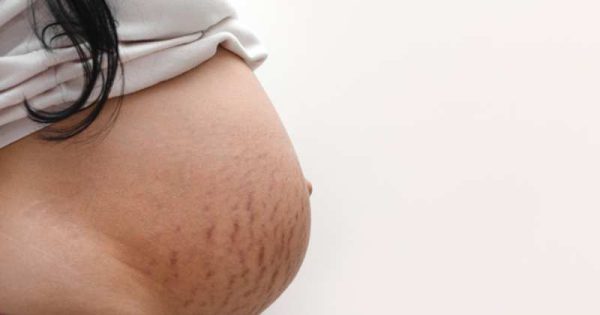
Hi, I’m Hilary – The Pregnancy Nurse® I have been a nurse since 1997, and I have 20 years of labor and delivery experience. I have touched THOUSANDS of pregnant bellies (including 3 of my own) and I have talked to patients about what is normal, and what is not. I am a expert on pregnant bellies!
Obviously, if you are having pain, especially severe pain, in your abdominal region you need to contact your provider ASAP so they can help you get to the cause. This article is just informational, please don’t take it as medical advice.
What causes belly button pain during pregnancy?
During pregnancy, it is not uncommon for women to experience belly button pain. This pain may occur due to various reasons, including an umbilical hernia or the stretching of ligaments, and the growth of your belly.
An umbilical hernia occurs when part of the abdominal wall weakens (or you get diastasis recti and the muscles separate), allowing tissue or organs to protrude through the navel, leading to pain. It can also occur due to the pressure exerted by the growing fetus on the abdomen.
On the other hand, stretching of the round ligaments is a common cause of pain during pregnancy. As the uterus grows, the supporting ligaments need to stretch to accommodate the growing fetus. The increased pressure on the abdomen can cause the navel to become more sensitive, resulting in pain (especially as baby grows behind it).
In reality, there’s a lot of belly button pain that they don’t quite understand why it is happening. Likely it is due to your growing baby, and the stretching of your skin that makes it a more tender and bothersome part of a woman’s body.
It is essential to consult a doctor if the belly button pain during pregnancy is severe or accompanied by other symptoms to rule out any serious health conditions.
BTW if your belly is starting to poke out, it’s time to get one of these. That one is fun and can be done easily with a partner!
When does Umbilical Pain start?
Often it starts in the second trimester. During early pregnancy, most often the uterus is below the pubic bone (or just above it) so it doesn’t do much to your belly button. But as pregnancy progresses into the second trimester your pregnant belly will have a lot of pressure behind it (and poke out more)
That is most often when pregnant people start to be bothered by it. However, the pain can progress an intensify as your baby grows out of your lower abdomen and expands your entire belly.
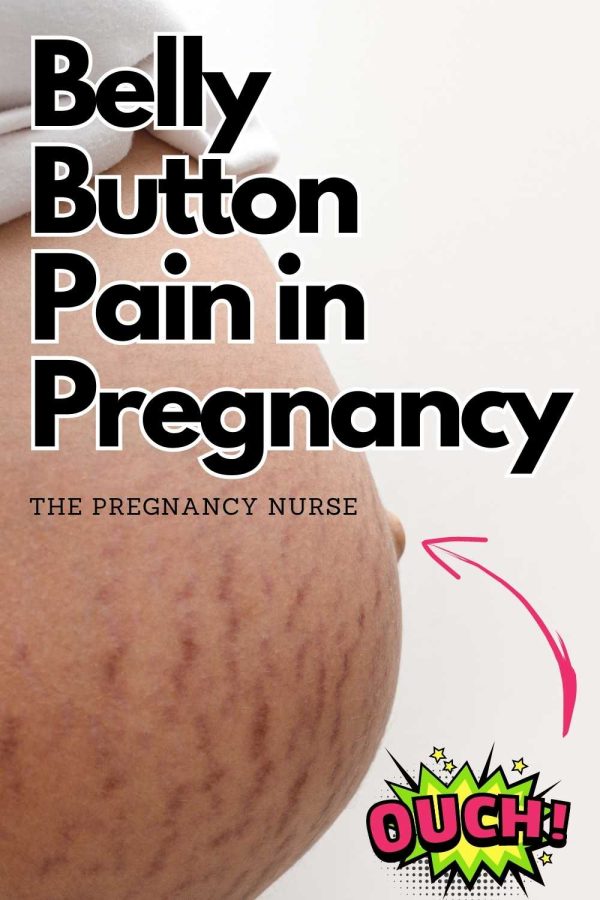
How do I know I have an umbilical hernia?
An umbilical hernia is a protrusion of abdominal contents, such as fat or intestine, through a weakness in the abdominal wall around the navel or belly button area. People who have an umbilical hernia may experience a visible bulge or bump in the belly button area.
This lump can be of varying sizes, from small to large, depending on the extent of the hernia. Some patients often experience discomfort or mild pain in the belly area. However, in other cases, there may not be any pain at all — so they are tricky!
To determine if you have an umbilical hernia, seek the advice of a medical professional. They can conduct a physical examination and conduct diagnostic tests, such as an ultrasound, to determine the presence and extent of the hernia.
Can I get surgery for an umbilical hernia during pregnancy?
It is generally not recommended to get surgery for an umbilical hernia during pregnancy. Pregnant women may experience an increase in intra-abdominal pressure, which can make the hernia more noticeable and uncomfortable, but surgery should only be considered in severe cases.
Since the hernia is most often due to your expanding uterus, that part will resolve itself after pregnancy and hopefully the issue will go away.
However, if bowel were to get trapped between your abdominal muscles, surgery may be something they would consider — so talk with your provider.
How you can get relief from belly-button pain during pregnancy?
Pain during pregnancy can be a common issue among expecting mothers. One particularly uncomfortable type of pain is belly button pain during pregnancy. Luckily, there are several ways to get relief from this discomfort.
First, try to avoid tight clothing that can put pressure on the abdomen and irritate the skin around the belly button.
Applying a warm compress can also help soothe the area and minimize pain. You don’t want heat across your whole belly, but a warm washcloth over just the painful area should be OK (but check with your provider to see if they have any recommendations).
Engaging in gentle exercises, such as prenatal yoga or stretching, can also provide relief while aiding in overall relaxation and reducing stress.
Additionally, it’s important to stay hydrated and eat a healthy, well-balanced diet to prevent constipation, which can exacerbate belly button pain during pregnancy. If the pain persists or becomes severe, always consult your healthcare provider to rule out any potential underlying conditions.
If you’re having ANY pain anywhere on your body I think it’s important to mention it during your check-ups. Your doctor may be able to figure out issues that they can help with (although some are just the normal aches and pains of pregnancy). I recommend putting things to remember at check-ups in the notes app on your phone or keeping them written down in your planner.
What is the ‘Outie’ Belly Button in pregnancy?
During pregnancy, a woman’s belly button can undergo several changes, including going from an “innie” to an “outie.” An “innie” belly button is when the navel is recessed into the skin, while an “outie” belly button is when the navel pops out.
The outie belly button in pregnancy occurs due to the stretching and growth of the uterus, which pushes the abdominal wall outwards and causes the belly button to protrude. This typically happens in the second or third trimester of pregnancy and is experienced by many pregnant women. However, not all women will experience an outie belly button during pregnancy as it varies from person to person.
Pro Tip: Some people get a linea nigra which is a dark line that extends up from your pubic bone up your belly through your belly button most often. All very normal (but surprising for a lot of people.
What will your belly button look like after pregnancy?
The good news is that after giving birth, the belly button usually returns to its pre-pregnancy state and becomes an “innie” once again.
What will a belly button piercing look like after pregnancy?
After pregnancy, a belly button piercing may look different due to the changes that occurred during pregnancy. The growing belly may have stretched the skin, causing the piercing to appear loose or misplaced.
Often stretch marks may originate from the belly button piercing as well.
Heads up! 👀 There may be affiliate links in here – I might earn a smidge with your click. No cost to you, just good vibes! Check my boring stuff for deets.
What can I do about belly button changes when I’m pregnant?
Throughout pregnancy, many women experience changes to their navels, which can be quite distressing. The good news is that in most cases, these changes are completely normal and nothing to worry about.
What can you do to ease your concerns and keep your belly button looking its best?
First off, it’s important to understand that every belly button is unique and individual, just like the rest of your body. During pregnancy, your body undergoes significant changes, particularly in the abdominal region, which can cause your navel to become stretched, protruding or even darker than usual.
Secondly, do what you can to support your abdominal muscles.
- Prevent constipation, and keep your digestive tract happy
- Possibly try a belly band to support the weight on your round ligaments, or Kinesiology tape
- Try to rest and put your feet up when possible.
- If the skin is itchy us something like cocoa butter rather than itching and bothering it more.
Also, try to avoid wearing pants that bother your belly button area. Some people prefer putting a bandage over their “outie” so it doesn’t snag on things or cause pain. I tried to not wear pants that went directly over my belly button (the panel kind that extend over your belly were better for me).
What Causes an ‘Outie’ Belly Button in Pregnancy?
During pregnancy, an ‘outie’ belly button is caused by the growing uterus pressing against the abdominal wall, which can cause the belly button to become more visible or protrude outward. As the uterus expands to accommodate the growing fetus, it puts pressure on the surrounding organs and tissues, including the navel. The degree of navel protrusion varies from woman to woman, depending on the size and position of the fetus and the elasticity of the abdominal wall.
Additionally, some women may have a pre-existing umbilical hernia, which can also contribute to an ‘outie’ belly button during pregnancy. While the appearance of the belly button may not have any significant impact on the health of the mother or the baby, it can be a source of discomfort or self-consciousness for some women. In most cases, the belly button will return to its normal position after childbirth, once the uterus shrinks back down to its pre-pregnancy size.
Remember, if your belly button is causing you pain do discuss it with your provider. If the pain is severe you do need to be seen soon by a provider (so call their office to see what they recommend).
And, while you’re taking it easy and putting your feet up, be sure to get a prenatal class. The Online Prenatal Class for Couples allows you to get prepared for your birth in just a few hours!
And, if you’re not quite sure you’re ready for that whole thing, check out my free prenatal class. It’s your first step toward getting in the driver’s seat of your birth.


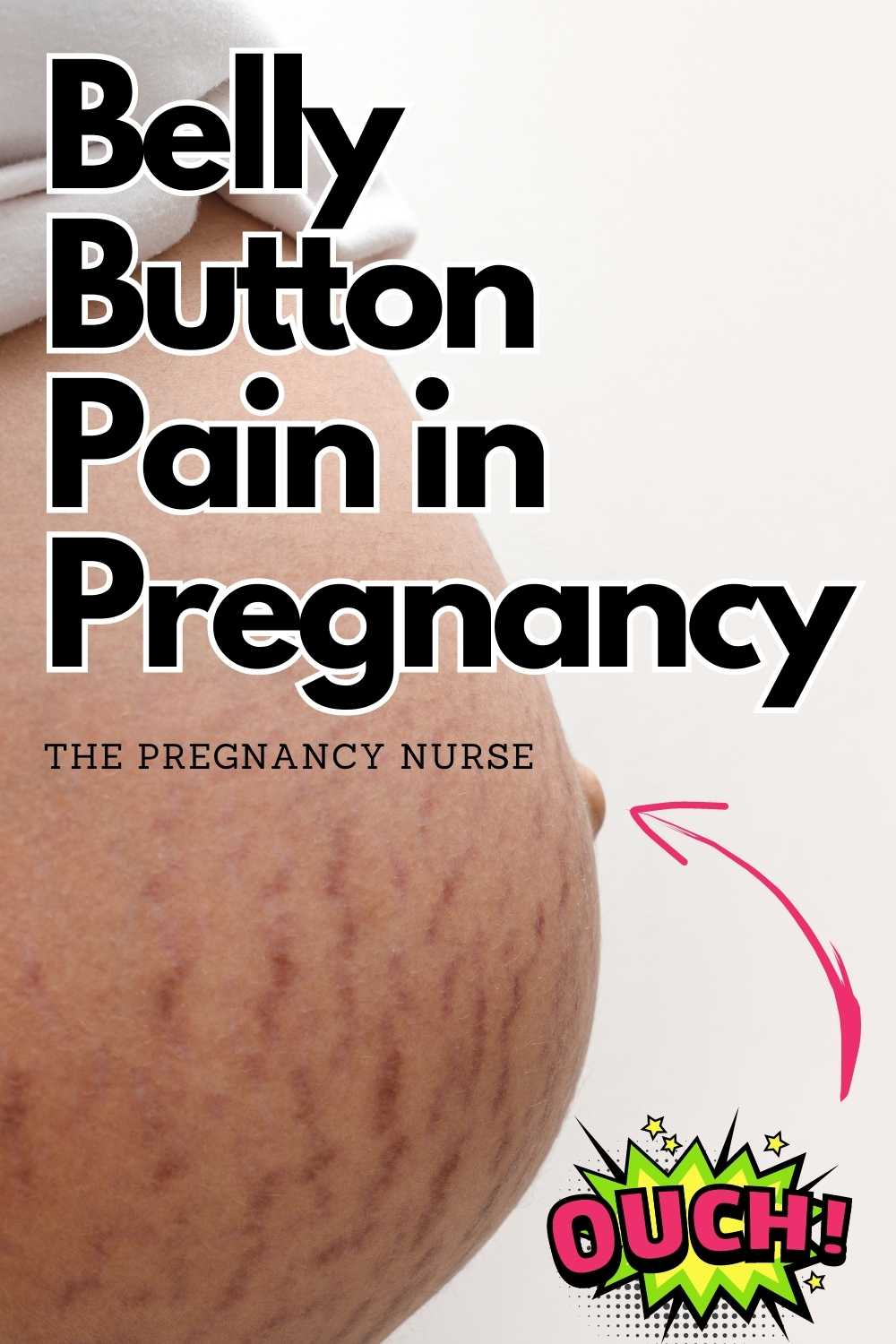

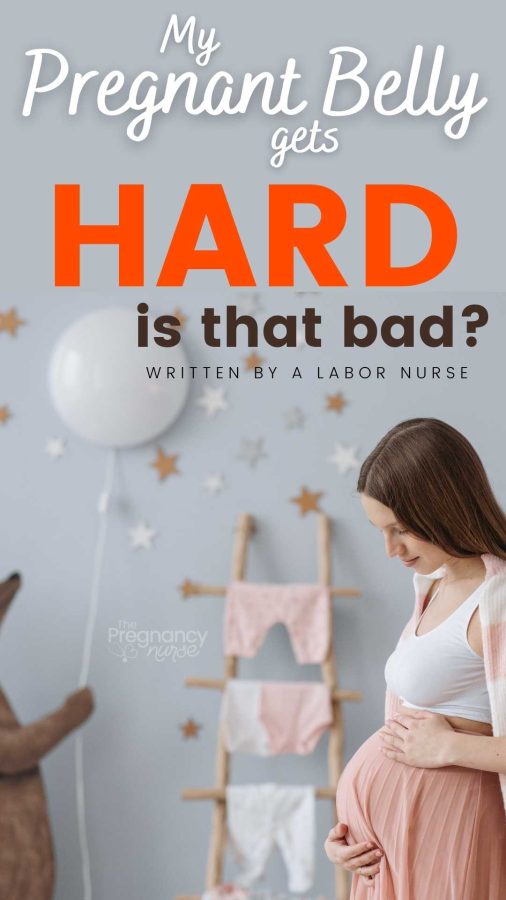

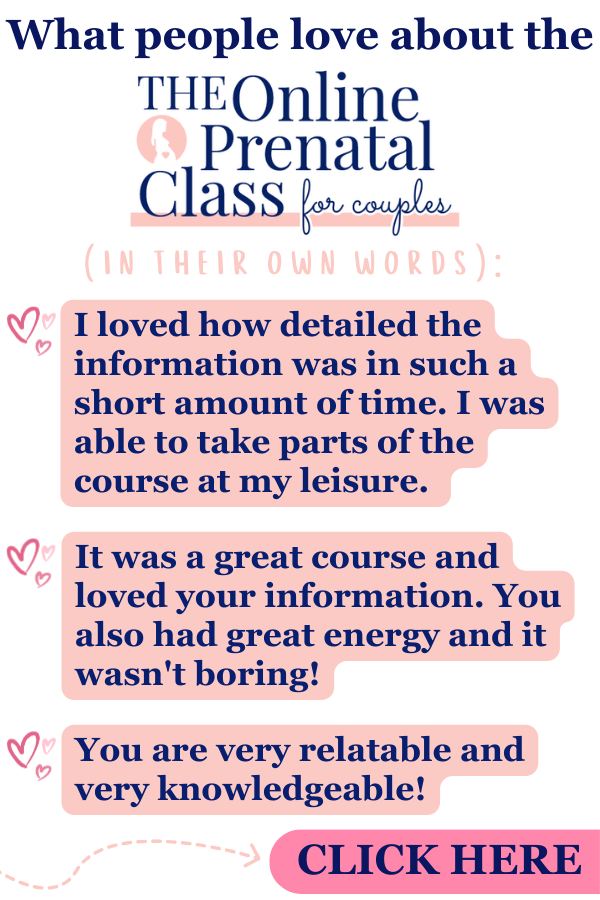

 Does Leaking Colostrum Mean Labor is Close?
Does Leaking Colostrum Mean Labor is Close?
